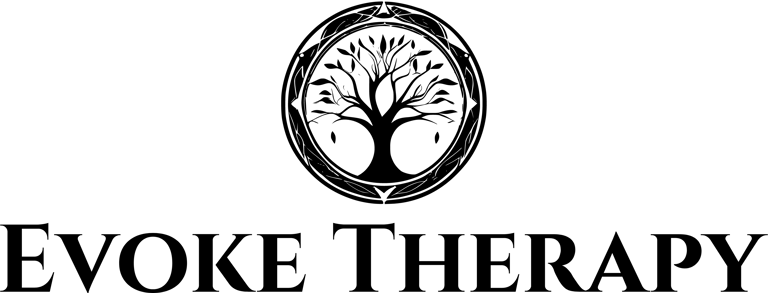Understanding Postpartum Depression
Postpartum depression is a complex emotional and physiological experience that can leave new parents feeling isolated, anxious, or detached after childbirth. This article explores who is most affected, how long symptoms can last, and which evidence-based therapies and holistic supports can help.
Understanding Postpartum Depression
Postpartum depression (PPD) — more broadly called perinatal depression when it includes pregnancy and the first year after birth — is not the same as the “baby blues.” It’s a clinically significant depressive episode that begins during pregnancy or within the first 12 months after delivery and can be moderate to severe, impair functioning, and carry real risks for both parent and child if left untreated (StatPearls, 2025).
What Is Postpartum (Perinatal) Depression?
Clinically, perinatal depression meets standard criteria for a major depressive episode (e.g., persistent sadness or loss of interest plus other depressive symptoms for ≥ 2 weeks) but with onset during pregnancy or within the first year postpartum. Symptoms commonly include low mood, anhedonia, sleep and appetite changes, fatigue, guilt or worthlessness, concentration problems, and sometimes intrusive thoughts about harming the baby or self. Screening tools commonly used include the Edinburgh Postnatal Depression Scale (EPDS) (Women’s Health Gov, 2023).
How Common Is It — Who Tends to Get It?
Prevalence estimates vary by study and population, but large meta-analyses estimate global prevalence in the range of approximately 10–20 % (Zhang, Dai & Li, 2022). Risk increases with prior history of depression or anxiety, lack of social support, financial strain, traumatic birth experiences, intimate partner violence, and hormonal or sleep disruptions (Hahn-Holbrook et al., 2018).
How PPD Interferes with Life
Untreated PPD can make even basic daily tasks feel overwhelming — caring for the newborn, maintaining relationships, or returning to work. The emotional fog often leads to shame and isolation, and when depression persists, it can affect attachment and child development (Fitelson et al., 2010). Early, compassionate treatment significantly improves outcomes for both parent and child.
How Long Does It Last?
Without treatment, PPD can last for months or even become chronic. With evidence-based care, most people begin to feel improvement within several weeks to months (Fitelson et al., 2010). Recovery is possible, and seeking help early matters.
Evidence-Based Treatments
Psychotherapies
Cognitive Behavioral Therapy (CBT): Proven effective in numerous trials and meta-analyses for reducing postpartum depressive symptoms (Pan et al., 2025).
Interpersonal Psychotherapy (IPT): Focuses on role transitions, grief, and relationships — common challenges during early parenthood (Fitelson et al., 2010).
Mother–Infant (Dyadic) Therapies: Strengthen bonding and emotional attunement between parent and baby (Chow et al., 2021).
Medications
SSRIs such as sertraline and fluoxetine are well-studied and effective. Sertraline is often preferred when breastfeeding (Frieder et al., 2019). Newer agents like zuranolone, an oral neuroactive steroid, have shown rapid improvement in recent clinical trials (Giannopoulos et al., 2025).
Adjunctive Supports
Omega-3 Fatty Acids: Some studies show modest benefit as an adjunct to therapy or medication (Chow et al., 2021).
Light Therapy, Exercise, Peer Support: Consistent evidence of mood improvement, particularly when used alongside primary treatment.
Herbal and Botanical Options (with Caution)
Saffron (Crocus sativus): Shown in a randomized controlled trial to be as effective as fluoxetine for mild–moderate PPD (Tabeshpour et al., 2017).
St. John’s Wort: Limited postpartum-specific data and important drug interactions — should only be used under professional supervision (Chow et al., 2021).
Proven Therapy Techniques
Behavioral Activation (BA): Helps parents re-engage in meaningful activities and routine (Yisma et al., 2024).
Structured CBT Modules: Address cognitive distortions, problem-solving, and relapse prevention (Pan et al., 2025).
Interpersonal Work: Builds communication and social support (Fitelson et al., 2010).
Mother–Infant Attachment Work: Enhances bonding and emotional connection (Chow et al., 2021).
Local Resources (Portland & Bend, Oregon)
Postpartum Support International – Oregon Chapter (PSI-OR): 1-833-943-5746. Free 24/7 helpline and peer support.
Baby Blues Connection (Portland): Free peer support groups and counseling referrals.
WellMama (Central Oregon): Peer support groups for depression, anxiety, and birth trauma.
Bend Counseling & Biofeedback (Bend): Therapy services specializing in perinatal mental health.
Maternal Mental Health Initiative – Deschutes County: Local education and treatment resources
.
Finding Your Way
Postpartum depression is not a personal failure — it’s a biological and emotional response to an enormous life transition. Healing is possible with care, compassion, and connection.
If you are in Oregon and struggling with postpartum depression or anxiety, I offer therapy that integrates evidence-based methods (CBT, interpersonal therapy, and trauma-informed approaches) with holistic attention to the mind–body connection. My work emphasizes compassion, empowerment, and practical support for real-life challenges in early parenthood.
Whether you’re a new parent feeling numb or anxious, a partner noticing changes in mood, or someone quietly struggling months after birth — you deserve care that honors your experience. Together, we can rebuild a sense of self, connection, and peace.
To schedule a consultation or learn more about therapy for postpartum depression, [insert link to your contact page or scheduling form].
Works Cited
Chow, R., Huang, E., Li, A., et al. (2021). Appraisal of systematic reviews on interventions for postpartum depression: Systematic review. BMC Pregnancy and Childbirth, 21, 18. https://doi.org/10.1186/s12884-020-03496-5
Evoke Therapy LLC
Portland, OR
evoketherapyllc@gmail.com
